Hooray! An invitation to create and install a site specific piece this coming summer in Normandy, France will bring me back to a region I had tromped around in several years ago on a quest to visit all the Outsider Art environments in that area. There are many. I figure this is a good opportunity to tour them with you on “Quirk”. And hopefully I’ll be able to revisit a few this summer.
I’ve often been asked how I find all the fantastic places I visit. Of course , it’s way, way easier now that there’s a lot of interest in Outsider Art and there’s easy access to info on the web. I no longer need to rely solely on my brimming book shelves, magazine clippings, and conversations with kindred enthusiasts, although these are still often where my interest in a particular site is first tweaked. Now there are a number of comprehensive websites where one can locate wondrous, quirky sites. For this Normandy trip, which I am going to highlight in this and subsequent posts, I relied heavily on the magnificent Dutch blog, “Outsider Environments Europe” to find new sites to add to my bucket list for France. After pinpointing the location of each site with Google Maps, I used my tried and true strategy of sticking on bits of tape and post-its onto a good paper road map (Michelin, of course) for every single site. With all these markers on the map it’s easy to start plotting a route, looking for the greatest concentration of sites in one drive-able area. France has so many outsider art environments, it’s best to choose one region at a time, and TAKE YOUR TIME–these quirky sites will lead you down less traveled country roads. In three weeks of back roads, my friend Abbie and I visited 17 sites–that was an ambitious trip!

One of my favorite outsider art environments sites in Normandy is “la Maison a Vaiselle Cassee”, the mosaic-ed home of Robert Vasseur in the town of Louviers.

I had learned that the Vasseur home was still “en famille”, lived in and cared for by Robert Vasseur’s son, Claude. Since I knew there was way more to the site than one could see from the sidewalk I decided to try to contact Claude Vasseur by phone the night before we planned to drive to Louviers. Amazingly, I was able to find Monsieur Vasseur’s number in the hotel phonebook. I practiced my lame French introduction, took several deep breaths in an attempt to overcome my phone phobia, and dialed the number. Monsieur Vasseur picked up the phone after just a couple rings. He seemed to understand my French, and I understood his so I figured we were on the right track. Would it be possible I asked, gathering my courage, for us to visit tomorrow? His reply? “Non, ce n’est pas possible.” The house was in a state of disrepair and he couldn’t allow visitors. I responded the only way I could think of : with complete desperation. My unrehearsed plea stated with the vocabulary of a third grader must have been truly pathetic: “Helas! We have crossed the Atlantic Ocean to see your home” . ( I am blushing just remembering that I actually said this! Who would say such a thing to a complete stranger??) But, Helas, indeed, Monsieur Vasseur appeared unmoved by my plea. I regained some modicum of maturity and remembered I should thank him before I hung up, and then made one last ditch effort: “May we park in front of your house and look from the sidewalk?” (Also a totally ridiculous thing to say). “Of course,” he replied, and “Bonne nuit.”
Monsieur Vasseur’s “non” sounded pretty decisive, so we drove to Louviers with heavy hearts–but what the heck–we were so close!
It wasn’t hard to spot the “la Maison a Vaiselle Cassee” from the street.

And –surprise! No sooner had we gotten out of the car and snapped a couple photos of the sidewalk wall


than Monsiuer Vasseur popped out. (Had he been posted at his window to watch for our arrival?) “Etes vous les Americaines?” We braced ourselves for the in-person rejection. Instead he threw open the gate saying “Entrez!”

We were greeted by Robert Vassuer’s dazzling creation.




The mosaic covering did not stop with the Vasseur house, but continued out into the garden which is replete with fancifully built structures and sculptures, large and small.





How’s this for a dog house?

By the time we had finished touring the garden, Monsieur Vasseur seemed to have completely forgotten that he had said “non” to me about four different ways just 12 hours earlier. He beckoned us inside his home.”There is more'” he said, “quite a bit more.”





Most touching of all was the little corner of the home that Claude Vasseur had set up as a sort of shrine to his parents. Here, his mother’s knitting ( a similar palette to her husband’s , no?) spread out on the divan in front of a heavily mosaic-ed corner:

and behind the divan, a lovely photograph of his parents:

Robert Vasseur had been a milk delivery man. He lived from 1908 to 2002. His work began on a whim one day after he broke a crock. He liked the effect of the little mosaic he created so much that he continued to mosaic for the next 50 years. His neighbors apparently liked the effect as well and began contributing material for his work–their broken dinnerware plus shells, bottle caps and little cast off objets d’art.


Butterfly images appear here and there, referencing Robert Vasseur’s radio code name “Butterfly 27”.



His faithful son, Claude, is a town cartographer. I could not help but be struck by the mosaic patterened look of his drawings! Beautiful!

Claude was clearly fond and proud of his parents, but overwhelmed, nevertheless, by the daunting task of maintaining this delicate treasure of a home. I am so grateful he opened the gates to us and welcomed us with open arms. It was in fact the truth that we had crossed the Atlantic to see his home.
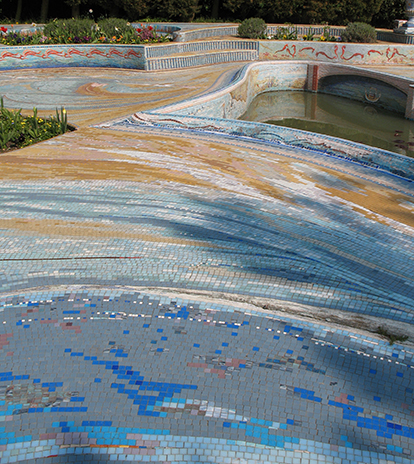
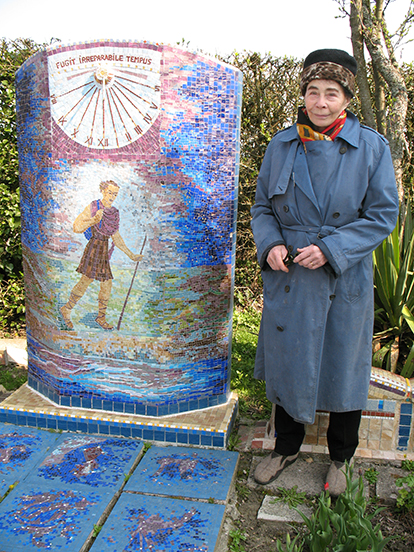
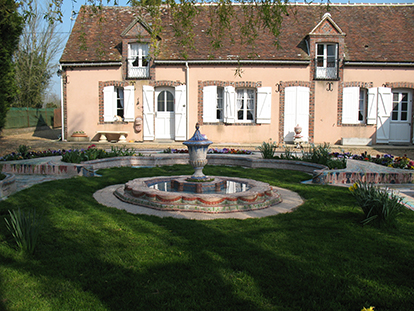
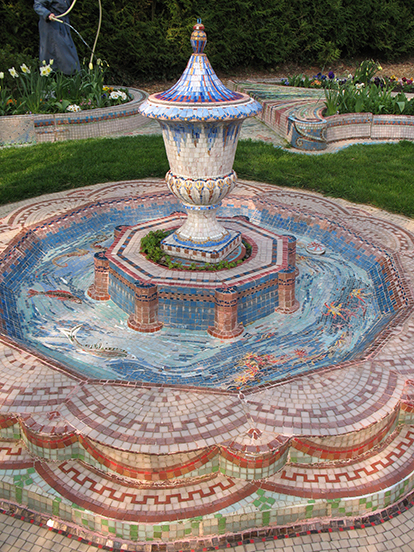


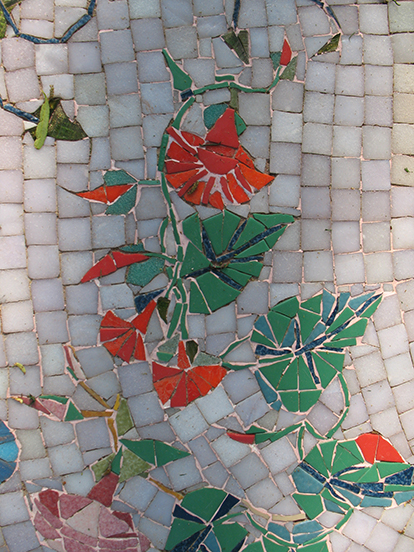
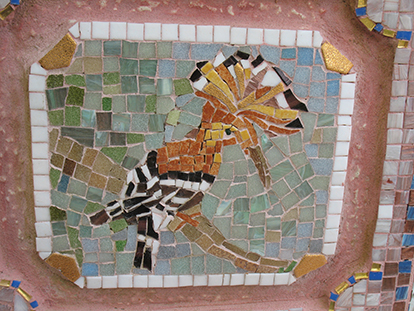
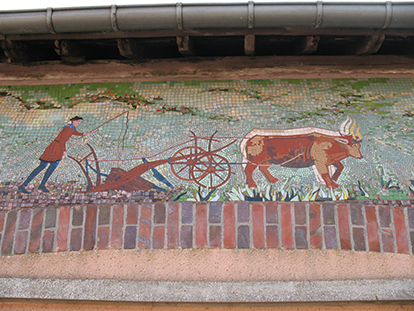
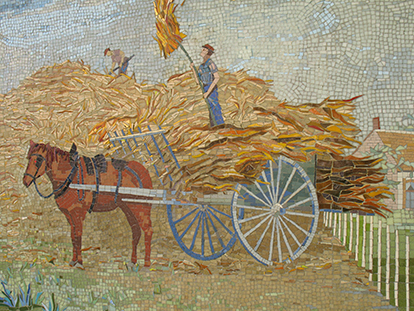
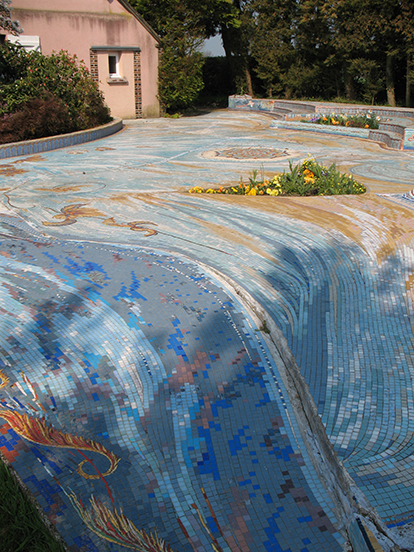
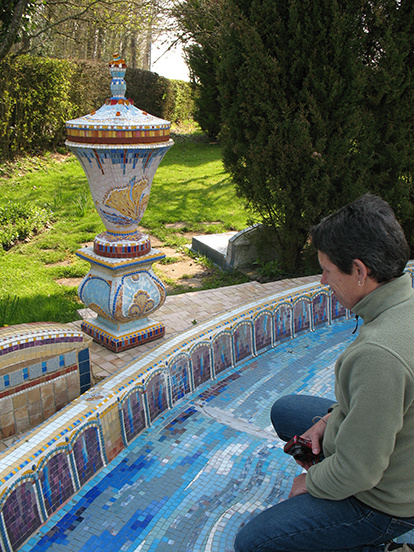
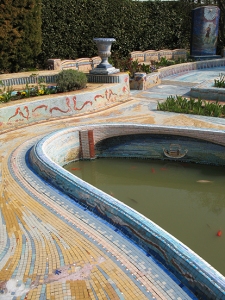
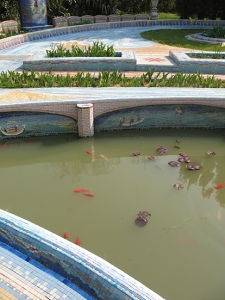
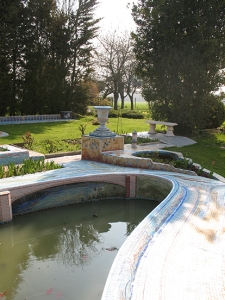
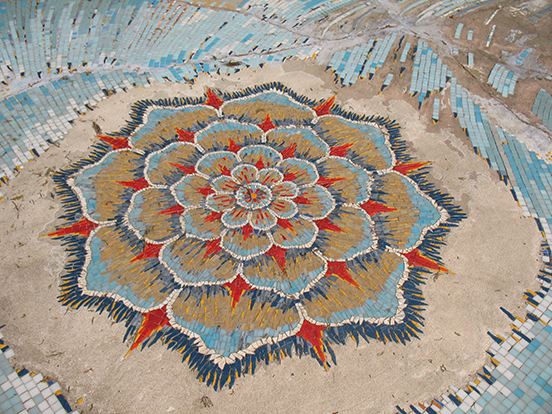





























































 Portrait of Fred Smith. Photo credit: Robert Amft. (Amft was an early admirer of Fred Smith’s work. He visited Smith often in the 1950’s and 60’s and photographed the artist and the site extensively. He even introduced Smith to the work of other self-taught artists.)
Portrait of Fred Smith. Photo credit: Robert Amft. (Amft was an early admirer of Fred Smith’s work. He visited Smith often in the 1950’s and 60’s and photographed the artist and the site extensively. He even introduced Smith to the work of other self-taught artists.)


























